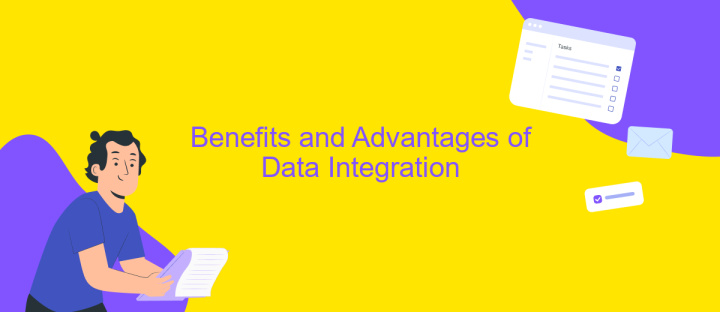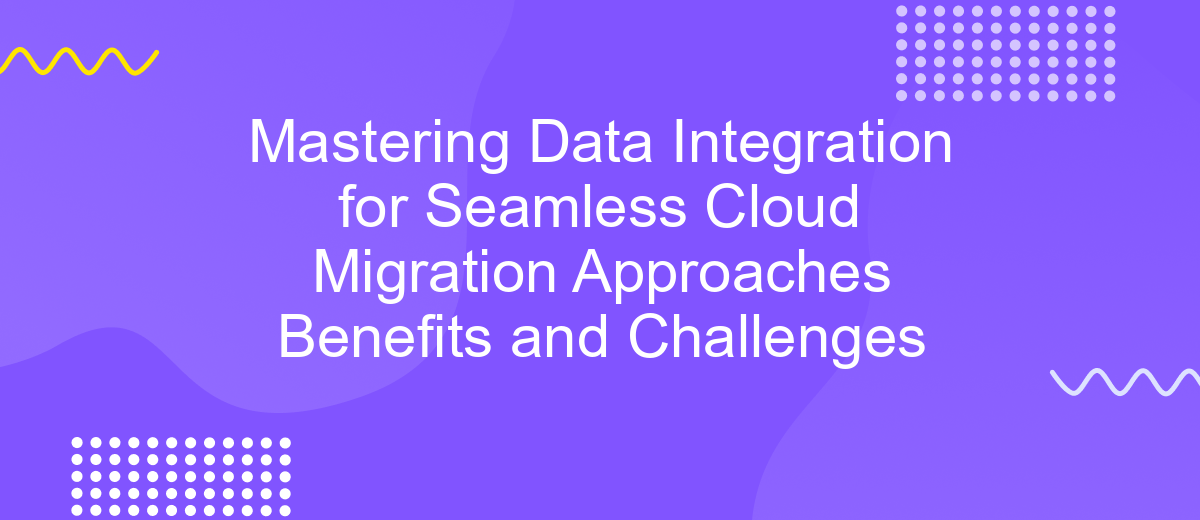Mastering Data Integration for Seamless Cloud Migration Approaches Benefits and Challenges
In today's digital age, seamless cloud migration is crucial for businesses aiming to stay competitive and agile. Mastering data integration plays a pivotal role in this process, ensuring smooth transitions and optimal functionality. This article explores the approaches, benefits, and challenges of integrating data effectively during cloud migrations, providing insights to help organizations navigate their journey to the cloud successfully.
Introduction and Background
In today's digital era, cloud migration has become a pivotal strategy for organizations aiming to enhance their operational efficiency and flexibility. Mastering data integration is crucial for ensuring a seamless transition to the cloud, as it helps in consolidating disparate data sources and maintaining data integrity throughout the migration process. This section delves into the core concepts of data integration in the context of cloud migration, highlighting its approaches, benefits, and challenges.
- Approaches: Various strategies and methodologies to achieve effective data integration.
- Benefits: Enhanced data accessibility, improved collaboration, and cost savings.
- Challenges: Data security, compliance issues, and integration complexities.
Understanding these elements is essential for organizations to navigate the complexities of cloud migration successfully. By leveraging robust data integration techniques, businesses can ensure that their cloud migration efforts lead to improved performance, scalability, and competitive advantage. This comprehensive overview aims to provide valuable insights into mastering data integration for a seamless cloud migration experience.
Data Integration Challenges and Considerations

Data integration in cloud migration presents several challenges, primarily due to the complexity of merging diverse data sources. One critical issue is data consistency, as discrepancies between datasets can lead to inaccurate insights and operational inefficiencies. Additionally, ensuring data security during the transfer process is paramount, as breaches can result in significant losses. Compatibility between legacy systems and new cloud infrastructure also poses a hurdle, often requiring extensive customization and testing to achieve seamless integration.
Another important consideration is the selection of appropriate tools and services to facilitate data integration. For instance, platforms like ApiX-Drive can streamline the process by automating data transfers and synchronizations between various applications. This reduces manual efforts and minimizes the risk of errors. However, it's crucial to thoroughly evaluate the capabilities and limitations of such services to ensure they meet specific business needs. Proper planning, continuous monitoring, and proactive troubleshooting are essential to address these challenges effectively and ensure a smooth cloud migration.
Benefits and Advantages of Data Integration

Data integration plays a pivotal role in modern cloud migration strategies, enabling organizations to seamlessly transfer and manage their data across various platforms. By consolidating data from multiple sources, businesses can ensure consistency, accuracy, and reliability of their information, which is crucial for informed decision-making and operational efficiency.
- Enhanced Data Quality: Data integration helps in eliminating redundancies and inconsistencies, leading to higher data quality and trustworthiness.
- Improved Collaboration: With integrated data, different departments can easily access and share information, fostering better collaboration and communication.
- Cost Efficiency: Streamlining data processes through integration reduces the need for manual data handling, thereby cutting down operational costs.
- Scalability: Integrated data systems are more adaptable to growth, allowing businesses to scale their operations without significant data management challenges.
- Real-time Insights: Data integration facilitates real-time data processing and analytics, empowering organizations to make timely and data-driven decisions.
In summary, data integration is essential for achieving a seamless cloud migration. It offers numerous benefits, including enhanced data quality, improved collaboration, cost efficiency, scalability, and real-time insights, all of which contribute to a more agile and competitive business environment.
Strategies and Approaches for Seamless Data Integration

Implementing seamless data integration during cloud migration requires a well-defined strategy. First, it is essential to assess the current data architecture, understanding both the data sources and the nature of the data. This ensures that the migration plan aligns with the organizational goals and mitigates potential risks.
Next, selecting the appropriate tools and technologies is crucial. These tools should support various data formats and provide robust data transformation capabilities. Additionally, they should facilitate real-time data synchronization to ensure that the migrated data is always current and accurate.
- Data Mapping: Clearly define how data from different sources will be transformed and integrated.
- Data Cleansing: Ensure data quality by removing duplicates and correcting errors.
- Data Security: Implement encryption and access controls to protect sensitive information.
- Monitoring and Testing: Continuously monitor the integration process and perform rigorous testing to identify and resolve issues.
Finally, effective communication and collaboration among all stakeholders are vital for the success of the data integration process. Regular updates and feedback loops help in addressing any challenges promptly, ensuring a smooth and efficient cloud migration.
Conclusion and Future Prospects
Mastering data integration is pivotal for achieving seamless cloud migration. By addressing the complexities of data integration, organizations can ensure a smooth transition to cloud environments, enhancing operational efficiency and agility. Leveraging advanced tools and services like ApiX-Drive can significantly simplify the integration process, enabling automated workflows and real-time data synchronization across various platforms.
Looking ahead, the future of data integration will likely see further advancements in AI and machine learning, driving more intelligent and adaptive integration solutions. As cloud technologies continue to evolve, businesses must stay abreast of these developments to maintain competitive advantage. Continuous investment in integration strategies and tools will be essential for maximizing the benefits of cloud migration while mitigating potential challenges.
FAQ
What is data integration in the context of cloud migration?
What are the main benefits of data integration for cloud migration?
What challenges might organizations face during data integration for cloud migration?
How can automation tools help in data integration for cloud migration?
What is the role of data security in data integration for cloud migration?
Apix-Drive is a simple and efficient system connector that will help you automate routine tasks and optimize business processes. You can save time and money, direct these resources to more important purposes. Test ApiX-Drive and make sure that this tool will relieve your employees and after 5 minutes of settings your business will start working faster.

